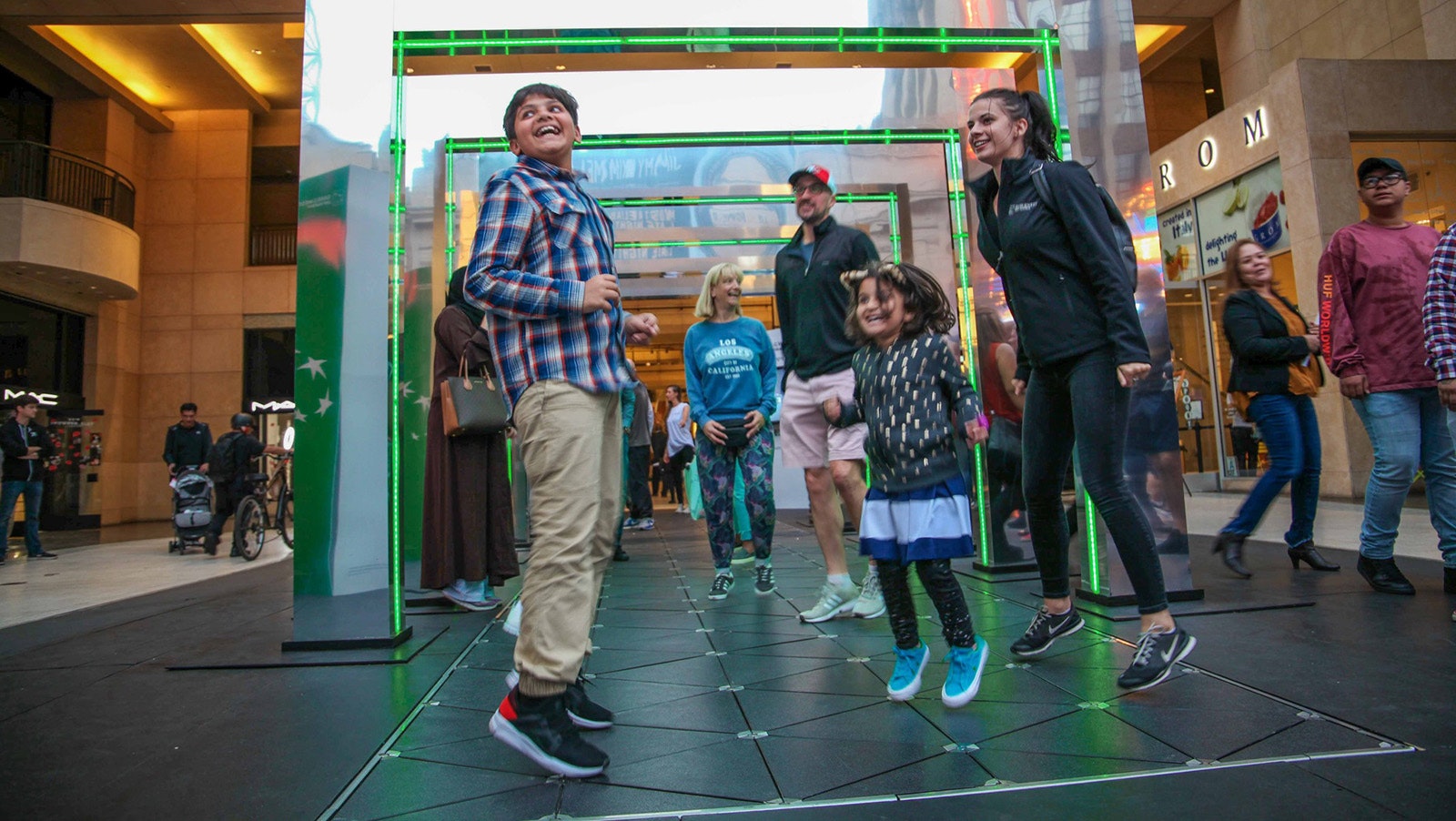When people go dancing, they aren’t often thinking about the physics of their steps. Yet each time a dancer’s foot lands, energy is transferred into the floor.
In 1932, Woods Landing Dance Hall in Woods Landing, Wyoming, was built on 24 box springs, and according to a nomination form for its entry into the National Register of Historic Places, the springs gave it “bounce and flexibility.”
Just Dance
To put that into terms of physics, the springs absorbed the kinetic energy of dance steps to give the stompers and waltzers more spring in their steps.
Sprung floors, as they were called, were quite popular in the 18th and early 19th centuries. Exactly why a springy dance floor for a community dance hall mattered may have had to do with the fact shoes were not as comfortable back then. They’re still used in gymnastics and cheerleading.
In the modern world, innovative dance floor engineers are also looking into ways to harness the energy from dance to power lights.
Pavegen Kinetic Dance Floors hopes create sustainability in the events industry.
Paul Price, head of marketing and communication for the London-based company, told Cowboy State Daily that Pavegen is supplying the technology for a St. Patrick’s Day event in the Pioneer Court in Chicago.
The floor is part of an energy challenge, what the company calls “Kinetic Brand Experience,” where up to 10 people at a time try to generate as much energy as possible in a 40-second gameplay.
Tiny Dancer
Before you throw out those rooftop solar panels to dance your way toward lower energy bills, understand the company’s floors don’t generate much power. A single step generates 3-5 watts.
That means to power a 60-watt bulb, you’d need 20 dancers going continuously with some pretty fast steps. Maybe the full cast of Riverdance could power a reading light.
Pavegen’s dance floors generate enough electricity to power light emitting diodes (LEDs) instantaneously on the floor or on a wall.
“But not building lights, if you know what I mean,” Price said.
Safety Dance
As more people get on the floor and the more intense their dancing, the LEDs will shine more intensely and for a longer period of time.
Perhaps if the DJ puts on something to get a good mosh pit going, the LEDs might light up a large hall. Once the dancing is done, however, there’s no more light from the LEDs.
“Like solar and no sun, no feet equals no electricity,” Price said.
Price said it is possible to harvest and store electricity in a battery for later use in LED mood lighting or to charge a cellphone.
Keep On Dancing
Price said the kinetic system uses some energy to transmit data to capture information about the amount of energy generated.
“We also use step data converted to help showcase and raise awareness about sustainability and net zero intent of global brands,” Price said.
The company displayed a Kinetic Brand Experience at a major sporting event for a global automotive giant, Price said. The participants’ steps drove small cars around a model racetrack. The faster the steps, the faster the car went. The game was tied to net zero goals the automotive brand was intending to achieve by 2030 and 2040.
“It’s a great way to engage with consumers or the public to get key messages across,” Price said.
Dance Hall Days
The company has a system at the training camp of the Minnesota Vikings as part of a science, technology and math education initiative the team is running. And it also has one at the visitor center at Yosemite Park.
Price said Pavegen isn’t using its systems in night clubs. They’re more for festivals and other fun events, where the floors create an interactive experience for the revelers.





